If you ask anyone about WWI, chances are the best you will get is a vague description of trenches, artillery, and mustard gas. When DICE announced the next Battlefield game would finally use the Great War as a backdrop, the question quickly became just how the developer planned to make such a war interesting, let alone fun. Returning to the basics of the Battlefield formula, Battlefield 1 not only delivers gorgeous graphics and strong multiplayer, but also a surprisingly well-crafted single-player to boot.
After the unique cops-and-robbers take on the series from Battlefield Hardline, and even the flashy ‘levelutions’ of Battlefield 4, Battlefield 1 is unquestionably DICE going back to the roots of the franchise. The tried and true formula of class-based, objective-focused combat is here in full effect.
Series’ staples like Conquest and Rush make a welcome return, for instance, and both are largely unchanged. Conquest is the same massive, all-out-war fans have come to love in the past, complete with vehicles, 64 players, and plenty of control points to fight over. Likewise, Rush sees a team of attackers push forward to destroy two points, the map progressing with each successfully destroyed pair. Alongside these modes, players can also pick simpler mainstays like Team Deathmatch and Domination, which is Conquest on a smaller map and without vehicles. With these modes, Battlefield 1 plays to the franchise’s core fans and is immediately recognizable for anyone that’s so much as dipped their toe in the series before.
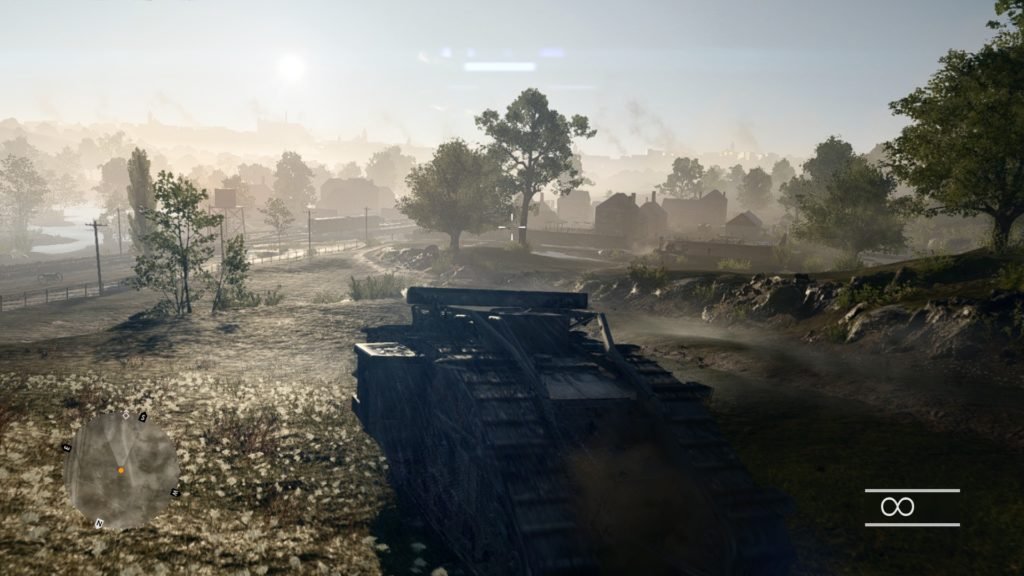
Pulling inspiration from the WWI setting, Battlefield 1 also features two new modes, both of which manage to be standouts, even if neither is quite perfect. First is War Pigeons. A combination of capture the flag and an assassination game mode, War Pigeons is a small-map mode that sees two teams race to claim randomly spawning pigeons in the hopes for sending a message and calling in an artillery strike.
Once someone grabs the pigeon, they must then write the message. This is shown as a gauge that constantly fills. If the player holding the pigeon stands still, the gauge fills faster. Meanwhile, the enemy team tries everything they can to kill the specific person holding the pigeon, thus stopping the message from being written. Even if they fail though, the pigeon can be shot out of the sky. Unfortunately, many of the matches devolve into drawn out affairs as both teams simply shoot the pigeon as it attempts to fly away, negating the point for everyone. That said, the fast-paced changing of priorities from attacking to defending as each team claims the pigeon is still refreshingly complex amongst the game’s other small-map offerings, even if a single strange design choice does mar the mode as a whole.
On the far other side of the spectrum is then what many will call the jewel of the Battlefield 1 multiplayer experience, Operations. Each playable with either 40 players or 64, there are four Operations total, each one devoted to a different front in the war. An ambitious blending of Conquest and Rush, Operations task an attacking team with claiming, usually, two control points (some special circumstances involve one or three). Once they do, the map progresses, the defenders fall back, and the attackers push to the next set of objectives. Attackers continue pushing until they run out of their 150 respawn tickets.
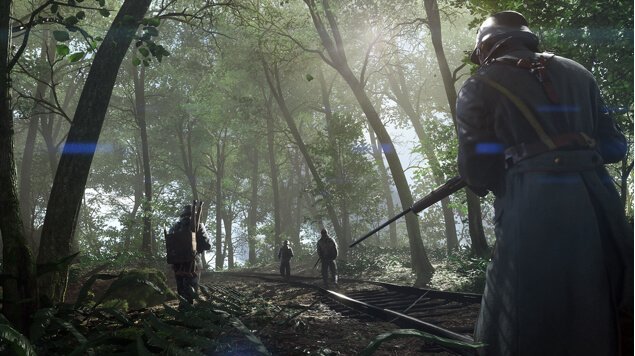
To make things substantially more epic however, attackers also have three or four chances, depending on the Operation, with all progress carrying over between each subsequent round. If they capture their way through an entire map, the game then progresses to a new map on the same front.
Even the shortest Operations take well over an hour, teams constantly locked in a massive push and pull across Battlefield 1’s impressively diverse array of locations. Following the first round, the attacking team receives the aid of new Behemoth vehicles such as an airship, armored train, or Dreadnaught warship. Each can become a huge, defining piece of the battle, somewhat ensuring at least a little progression from round to round.
Out of every Operation I fought, it’s worth noting that only once did the attackers push to a second map, being swiftly stopped soon after. While the back and forth of the mode is enjoyable, it is likely DICE will need to make some changes if the attacking team is ever meant to actually win.
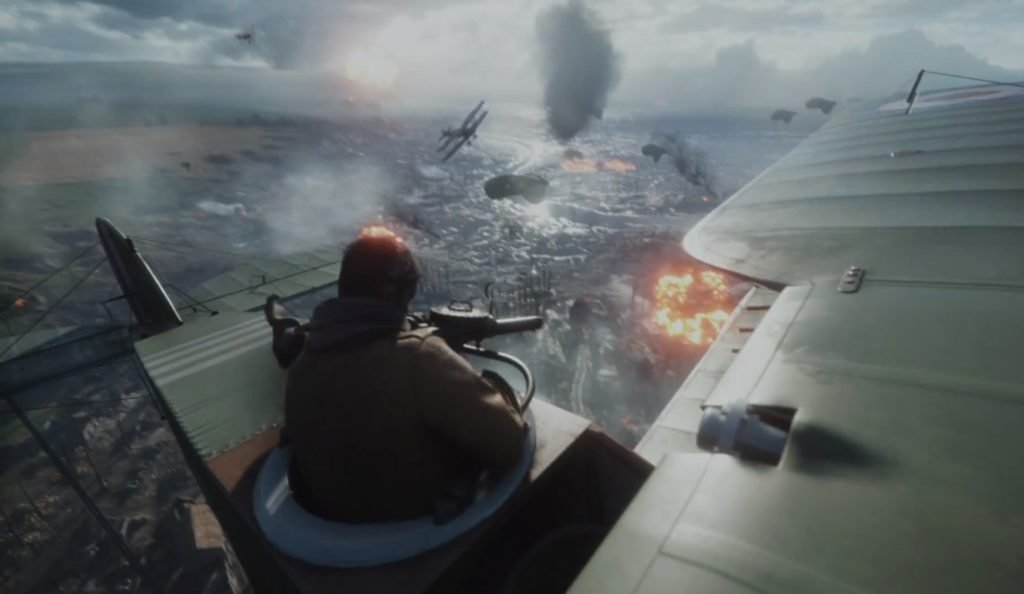
Other than that, Operations struggle due to one simple factor, there are too many players on the field. In general, Rush, with only two objectives to fight over at any given time, works due to capping the total number of players at a manageable 24. Operations on the other hand, center the action around only two objectives (Conquest usually offers five or six), but up the player count to 40 and even 64, often leading to chaos and slaughter instead of meaningful engagements. Granted, these massive battles are completely unique and a blast to experience at first. But even in my relatively short time with them, such chaotic fights did begin to loose their appeal.
Where multiplayer really shines is in all the smaller refinements DICE has brought to the table. Environmental destruction has never felt as responsive and dynamic. Maps are pockmarked and brutalized by the end of every match. Banks of fog can even roll in, making it suddenly difficult to see. In many ways though, it is the WWI setting that inspires many of the game’s most interesting touches.
For the most part, DICE does an excellent job molding the era to the game’s formula, adding interesting wrinkles as they go. Instead of a defibrillator, the new Medic Class carries a vial and syringe, which takes slightly longer to use. Vehicles, though fewer they may be, play a substantially larger, almost boss-encounter-like role in combat, since infantry has fewer weapons with which to destroy them. And riding into battle on horseback is an entertaining oddity all its own.
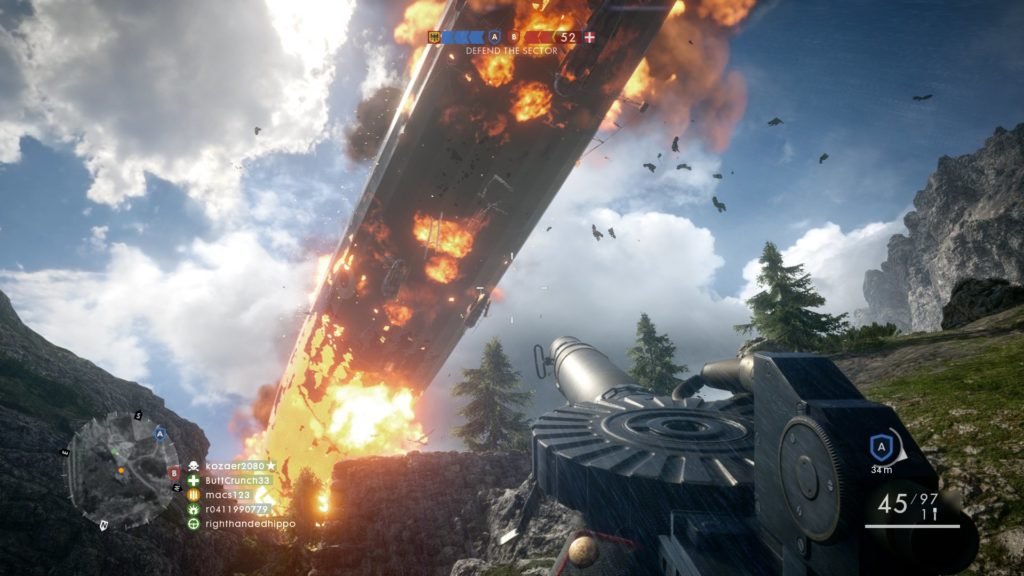
Even mustard gas plays a role. Instead of being used as a lethal weapon, it is more an area denial and encumbrance to the enemy. Every player can easily pull on a gas mask at the touch of a button, but wearing the mask takes away your ability to aim down your sights.
The maps themselves excel in their variety, making use of locations from throughout the war, including locations from France, Italy, and even down into the Middle East. Each map has a distinct flow for Operations and Rush, beautifully handled to ramp up the emotion as the match continues. More than a few maps conclude with a massive fortress at the end, making the final push of either game mode truly feel like a worthy climax for both sides.
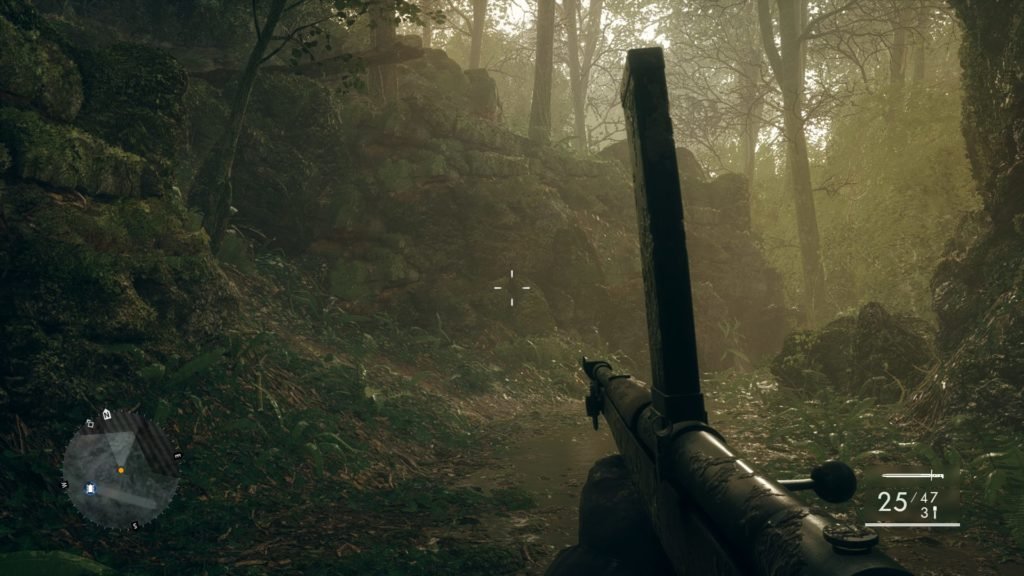
With these strengths in mind however, Battlefield 1’s multiplayer does have a few hiccups. While the maps throughout Europe feature trenches and buildings, the maps in the Middle East are instead much more open. While an aesthetic choice that clearly fits the locations, it also means each becomes a playground for snipers. Though the majority of other weapons are noticeably less accurate at long range, befitting the period, sniper rifles are surprisingly not. With hardly any bullet drop and the ability to still get a one-hit kill body shot if within the right range, sniper rifles are incredibly powerful. This turns each Middle East map into a shooting barrel full of all the players attempting to use classes other than Scout. While perhaps not game breaking, it did make me begin to avoid the Middle Eastern Operation all together.
Along with this, there are also a number of strange oversights. Not counting the additional companion app, the only way to customize your loadouts or purchase new weapons for each class is to do so during a multiplayer match. Similarly, unless you press ‘Exit’ the moment a match ends, the option to leave goes away. Hesitate, let alone dare to look at the scorecard, and you end up stuck in the minute long post-match countdown, and the loading screen for the next match, before actually being able to back out to the main menu.

While I never lost connection during a match, I did loose connection multiple times while trying to load into one. Though only occasional, it still happened often enough to be frustrating.
Battlefield 1’s multiplayer has a lot going for it. It doubles down on the squad play that made the franchise famous, and handles it with style, even if a few of the new aspects still need a bit of work. While that alone might be more than enough for long-time fans, it’s the game’s single-player campaign that packs the most delightful surprises.
The last few Battlefield campaigns have, admittedly, been a bit bland. Battlefield Hardline managed to mix things up, adding new non-lethal options, but overall still lacked the character and heart a memorable story requires. Thankfully, this is an issue Battlefield 1 doesn’t share.
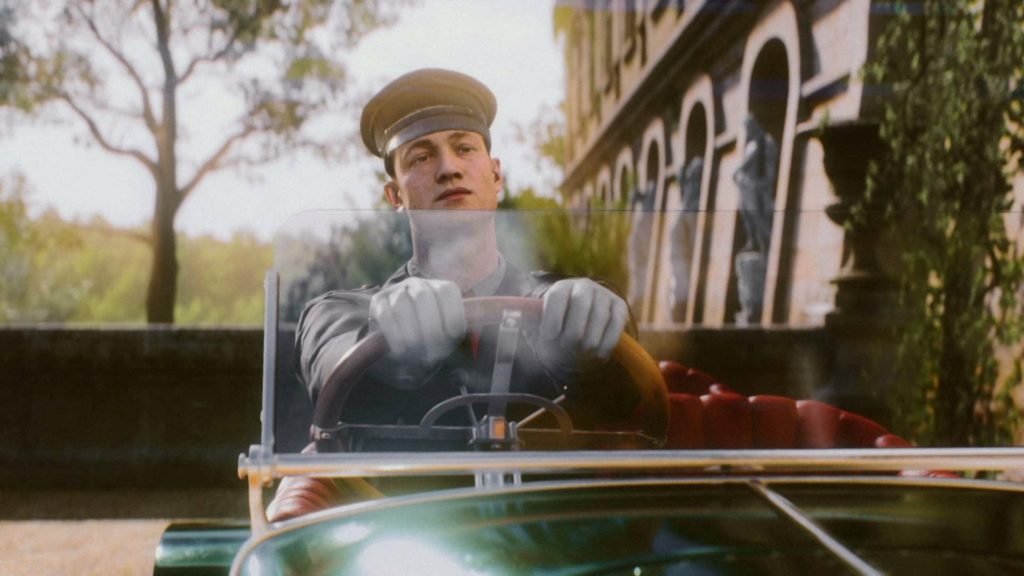
Focusing more on situations away from the front lines or uniquely action packed, the campaign not only offers a wide range of locations and gameplay, but also sheds light on some of the less-considered parts of WWI. Spanning seven to eight hours total, the campaign missions are split across five vignettes, each following a different character. The campaign manages an impressive amount of variety, while also setting up and exploring a handful of touching, character-focused narratives.
The two weakest of the Battlefield 1 set are oddly enough the two advertised the most. Through Mud and Blood follows a young chauffeur who joins up near the end of the war and is assigned as the new driver for a tank crew. Meanwhile, Nothing is Written places players in the shoes of an Arab Bedouin woman fighting alongside Lawrence of Arabia. In both cases, the focus of the narrative is external to the character, the point being the conflict they are caught up in, instead of the people themselves.
That said, both sets of missions do manage to change up the gameplay we are used to seeing in a Battlefield game. Aside from large scale, bombastic fights where you are charging German lines in your tank or in an all-out assault against an armored train, each also offers missions that require stealth and patience. Using binoculars, you can mark enemies and sneak through patrols. You can disable alarms or even steal enemy vehicles. Featuring massive maps with multiple objectives to complete, it’s up to you how, and in what order, to tackle them.
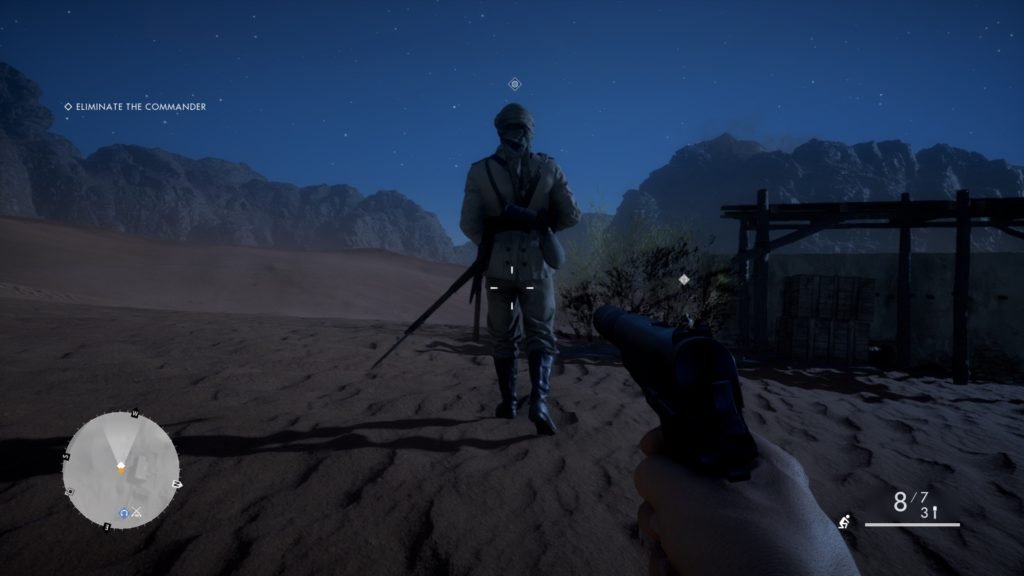
It’s in the other three vignettes, however, that the brilliance of Battlefield 1’s single-player comes to the forefront. The Runner, based on the disastrous Gallipolli Campaign, tells the story of an Australian veteran who is forced to take a young rookie under his wing. Meanwhile, Avanti Savoia, a story of an Italian man fighting to find and save his twin brother, is presented as an old man recounting the events to his daughter years later. And Friends in High Places, a story of about a pilot and his gunner, actually uniquely sees the character himself telling the story to the player like a memoir, all to fantastic effect.
While each produces a near perfect mix of vehicles, stealth, and classic combat, it’s the stories that stick out and resonate the most. DICE promised a single-player that would focus on the people behind the crosshairs and tell their stories. Though not all five War Stories knocked it out of the park narrative-wise, the majority did, and all delivered exciting, refreshing gameplay. In short, the single-player might not be the reason most people will pick up Battlefield 1, but it is certainly worth playing.

